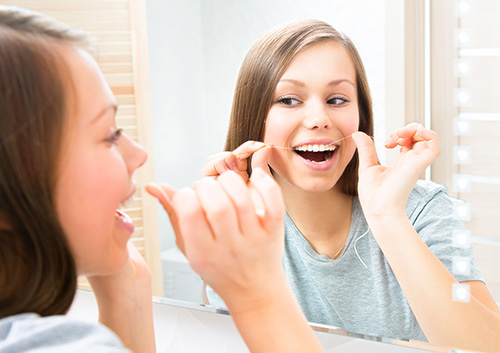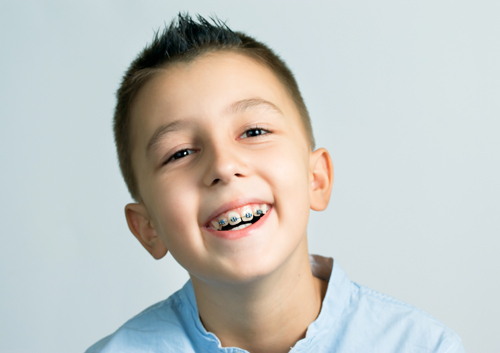Many parents often wonder, “Do pacifiers affect babies’ teeth?” Pacifiers can provide babies with a soothing sensation, which keeps them content and provides a feeling of relaxation. However, frequent pacifier use may cause dental issues and complications as teeth develop. Our team at First Class Orthodontics will educate you on how it’s possible to give your baby a pacifier and avoid the problems it may cause.
What Are The Benefits Of Pacifiers?
Any parent who has seen a baby content with a pacifier doesn’t doubt the benefits of its use. In fact, pediatric research shows that pacifier use in very young babies shouldn’t be discouraged, and the American Academy of Pediatric Dentistry advises that pacifiers are preferred over the habit of thumb-sucking. Pacifiers for babies have the power to provide pain relief, relaxation, and comfort whenever necessary. Doctors publishing with the American Academy of Family Physicians explain that pacifiers actually have a positive influence on kids between one and six months old. Children who use pacifiers have shown to have a reduced risk of sudden infant death syndrome.
What Is Pacifier Teeth?
Pacifier teeth is a condition that may occur as a result of extended pacifier use. A baby’s mouth and teeth begin forming in the womb and continue to grow throughout childhood. Any object held in an infant’s mouth for long periods during this important time can affect tooth positioning and dental development. According to the AAPD and American Dental Association, the dental effects of frequent pacifier use include:
- Crooked teeth
- Problems with jaw alignment
- Protruding front teeth
- Changes to the roof of the mouth
What Age Should My Baby Stop Using A Pacifier?
Parents can avoid the risks of their baby developing pacifier teeth by weaning their baby away from the pacifier by age two. By this age, some dental effects may be seen, but the greatest changes appear in children older than four years. Pacifiers have also shown to increase the risk of ear infections in babies older than six months.
What Are The Effects Of Pacifiers On A Babies’ Teeth?
 The long-term use of a pacifier changes mouth shape and the alignment of teeth. According to the American Academy of Pediatric Dentistry, the overuse of pacifiers affects mouth and teeth development the same way as long-term thumb-sucking. As a child’s upper front teeth tip forward, teeth may become crooked, which leads to biting problems. There may also be changes in jaw alignment and tooth positioning. The American Dental Association states that other symptoms of pacifier teeth include open bite and changes on the roof of the mouth.
The long-term use of a pacifier changes mouth shape and the alignment of teeth. According to the American Academy of Pediatric Dentistry, the overuse of pacifiers affects mouth and teeth development the same way as long-term thumb-sucking. As a child’s upper front teeth tip forward, teeth may become crooked, which leads to biting problems. There may also be changes in jaw alignment and tooth positioning. The American Dental Association states that other symptoms of pacifier teeth include open bite and changes on the roof of the mouth.
How Do I Stop My Baby From Using A Pacifier?
At First Class Orthodontics, we understand that encouragement and praise are the best tools for breaking a pacifier habit. Praising your baby for not using a pacifier, and providing a reward can create a sense of motivation to stop. If children use pacifiers when feeling anxious, try avoiding stressful situations and offering cuddles and other comforts. For young babies who need some extra soothing at times, pacifiers provide the perfect feeling of reassurance. As long as pacifier use doesn’t become frequent, there is no risk of developing pacifier teeth.
Finding Out How Pacifiers Affect A Babies’ Teeth In Franklin Square NY
Dr. Boral and our team at First Class Boral Orthodontics are experienced in pediatric dentistry. We are here to answer any questions or concerns you may have regarding your baby’s teeth or how pacifiers affect a babies’ teeth in Franklin Square NY, West Hempstead NY, Valley Stream NY, Elmont NY, and Garden City NY. Contact First Class Orthodontics today to schedule a free consultation. Call now (516) 292-6484.

 516.292.6484
516.292.6484

 Dr. Boral is a leading
Dr. Boral is a leading 








 516.292.6484
516.292.6484